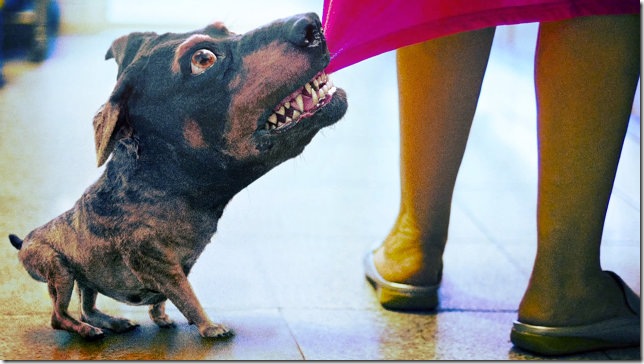By Myles Ludwig
What best defines an American Legend?
Why, it’s Chrysler, of course. The car company (a division of Fiat, by the way) has now placed itself firmly in the pantheon of American idols — movie stars and musicians — with its Super Bowl commercials spieled by first Clint, now Dylan, people so famous they need be known by only one name, like Picasso or Madonna. Or even no name, but a gesture – a little guitar neck twirl — or a voice grumbling out of a cave of woolly mammoths.
These are legends elevated to celestial hashtag-dom.
Chrysler itself is an American legend. It accepted millions in government bailouts, and what could be more American than that?
And only in America could a Jewish-Puerto Rican-Filipino child Elvis impersonator raised in Hawaii appropriate a doo-wop black act with dance steps derived from James Brown, complete with acrobatic split and a pompadour that matches Janelle Monae’s for stick-to-it- iveness.
Only in America could this guy include a mad punk California garage band that usually performs naked, a sock being their signature concession to a raincoat, in an explosive performance blasting through a mirage of hazy light tricks — smoke and fog and fireworks and laser streaks reminiscent of the Olympics’ opening in China, including a magic Pepsi logo of red light that swept across the fans.
Quite a spectacle.
And no marching Madonna, no swinging Miley, no wardrobe or finger hijinks. Not even the traditional brass band.
The performance was electric: the pompadour didn’t move, a miracle of Brylcreem. A bare-chested Red Hot pranced and trilled in shorts and painted pantyhose. They worked it, leaving nothing on the stage but a puddle of sweat and grease.
Many who watched never heard of Bruno Mars, but not Hall of Famer and commentator Michael Strahan, a guy who could thread his morning show co-host Kelly Ripa through the gap in his teeth or fold her into the palm of his hand. He validated his cool creds while his benchmates shrugged their shoulders. What was that? Old school, my man.
The Super Bowl is a quintessentially American event, one in which the big buck supersedes the big game. The commercials, even in multi-screen leaks, have become more highly anticipated than the game itself which, at present, is in danger of its continued existence as the crescendo of concussion horrors builds towards an inevitable climax.
It is viewed by a pastiche of demographics. One billion in the world, not including North Koreans or child soldiers of the Central African Republic or Al Qaeda-trained terrorists. Judging the commercials is now a consumer sport. Everyone can play, no shoulder pads needed.
And every media platform, except PBS, hypes this contest as if it were Judgment Day. Call an audible Rapture. Popcult pundits of every persuasion busily analyze their meaning and prophesize The Next Big Trend.
But the Super Bowl is sui generis and no conclusions can reasonably be drawn and scaled.
The demo-mashup makes it near impossible for a media buyer to nail down a market segment, so the ads are necessarily sprayed like a vaudeville spritz. Get everybody wet. Forget about cultural differences. We’re all the same; it’s a globalized world of commerce.
Ads have to grab attention, of course, and they must be at least as good as the nachos, a pretty low bar.
Once upon a time in the darkest ages of advertising history, their effectiveness was assumed to be related to product sales. But surely Mr. Pistachio doesn’t expect a million people to run out and buy a bag of nuts. So that measurement was replaced by recognition and recall (did you see it, do you remember it, what was the product/message). Old yardsticks. Then, ads were totally abstracted to provide entertainment not necessarily related to the product.
Now, brand value is the Holy Grail. The challenge is how to best represent what the brand represents — like the angry Doberhuahua, for example.
Some do stick in the mind: the aforementioned Chrysler, Mr. Pistachio and the Doberhuahua — inspired, but I can’t remember the product. Radio Shack seemed to score by turning itself into Best Buy Jr. with the help of a mob of creepy characters from the stoned age of the ’80s. The pre-game Middle East fizz was shaken up by that tasty little egg cream Scarlett Johansson, if you like to make your own seltzer with food coloring. What was that thing with the weird guy in afro fright wig doing? Was that Ali G?
So what standard can be used to judge these mini-movies aspiring to viral Nirvana and upon which clients, accounts, jobs, bonuses, stakeholders and shareholders rely?
You got me.
They’re just trying to get us to buy stuff anyway they can.
As Russell Wilson could’ve said: Why not Leonard Cohen for Canadian Volkswagen?
Why not, indeed.
Myles Ludwig is a media savant living in Lake Worth.
